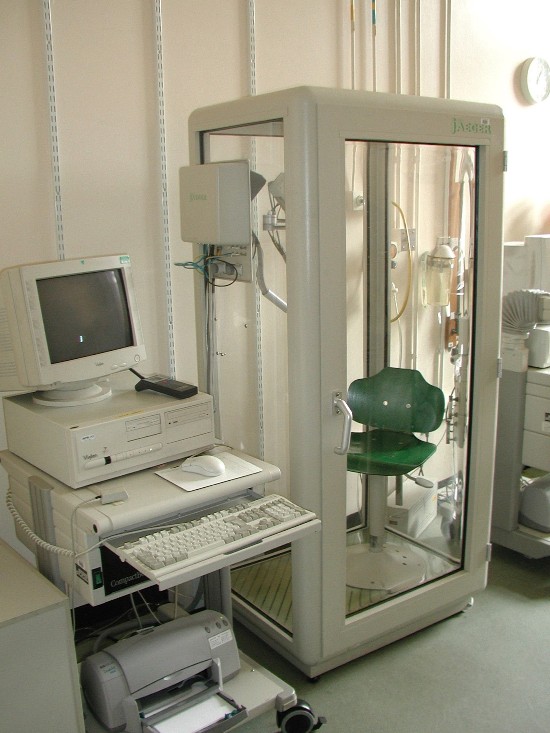- 0044 (0) 207 351 8754
- [email protected]
- Royal Brompton Hospital - London
At high altitude the atmospheric pressure drops which means that the oxygen content is effectively reduced. Airplanes are pressurized to the equivalent of 5-8000 feet (1525-2438 m) as opposed to the 30-40,000 feet (9144-12192 m) they are actually flying at. This means that the equivalent fraction of inspired oxygen is 15-17% rather than the 21% breathed at sea level. This results in a fall in the amount of oxygen in the blood, usually by about 4%. For most people this is not a problem, but for those whose oxygen levels are already reduced by significant lung disease it may be a problem, especially in infants. We can test this with a fitness to fly test so we can advise parents whether to arrange supplemental oxygen to be available on board the aeroplane.
No special preparation is necessary. If the accompanying parents has claustrophobia they should bring another adult to be with the child during the test. Currently the test is being carried out at Evelina London Children’s Hospital.
The infant and an adult (usually the parent), sit inside a plethysmograph (a chamber rather like an old style telephone box).
A pulse oximeter, which measures blood oxygen levels is taped onto a finger or toe (there are no needles involved) so that the heart rate and oxygen levels can be monitored continuously. The baseline is measured, a normal value being 95-100%.
The oxygen level in the chamber is gradually reduced to 15% over 5 minutes (it is normally 21%).
If the child’s oxygen saturation falls to 85%, oxygen is administered immediately through a tiny tube attached under the nose. and the amount of oxygen titrated to restore the child’s oxygen level back to its baseline level at the start of the test.

The chamber in which the fitness to fly test is carried out.
The child is monitored very closely and we do not allow the oxygen level to drop to an unsafe level.
The parent will be informed of the results of the test immediately and if the saturation is <90% for a significant period of time, supplemental oxygen will be recommended for flying. In-flight oxygen can be arranged with the airline. You can go home straight away.
At high altitude the atmospheric pressure drops which means that the oxygen content is effectively reduced. Airplanes are pressurized to the equivalent of 5-8000 feet (1525-2438 m) as opposed to the 30-40,000 feet (9144-12192 m) they are actually flying at. This means that the equivalent fraction of inspired oxygen is 15-17% rather than the 21% breathed at sea level. This results in a fall in the amount of oxygen in the blood, usually by about 4%. For most people this is not a problem, but for those whose oxygen levels are already reduced by significant lung disease it may be a problem, especially in infants. We can test this with a fitness to fly test so we can advise parents whether to arrange supplemental oxygen to be available on board the aeroplane.
No special preparation is necessary. If the accompanying parents has claustrophobia they should bring another adult to be with the child during the test.
The infant and an adult (usually the parent), sit inside a plethysmograph (a chamber rather like an old style telephone box).
A pulse oximeter, which measures blood oxygen levels is taped onto a finger or toe (there are no needles involved) so that the heart rate and oxygen levels can be monitored continuously. The baseline is measured, a normal value being 95-100%.
The oxygen level in the chamber is gradually reduced to 15% over 5 minutes (it is normally 21%).
If the child’s oxygen saturation falls to 85%, oxygen is administered immediately through a tiny tube attached under the nose. and the amount of oxygen titrated to restore the child’s oxygen level back to its baseline level at the start of the test.

The chamber in which the fitness to fly test is carried out.
The child is monitored very closely and we do not allow the oxygen level to drop to an unsafe level.
The parent will be informed of the results of the test immediately and if the saturation is <90% for a significant period of time, supplemental oxygen will be recommended for flying. In-flight oxygen can be arranged with the airline. You can go home straight away.